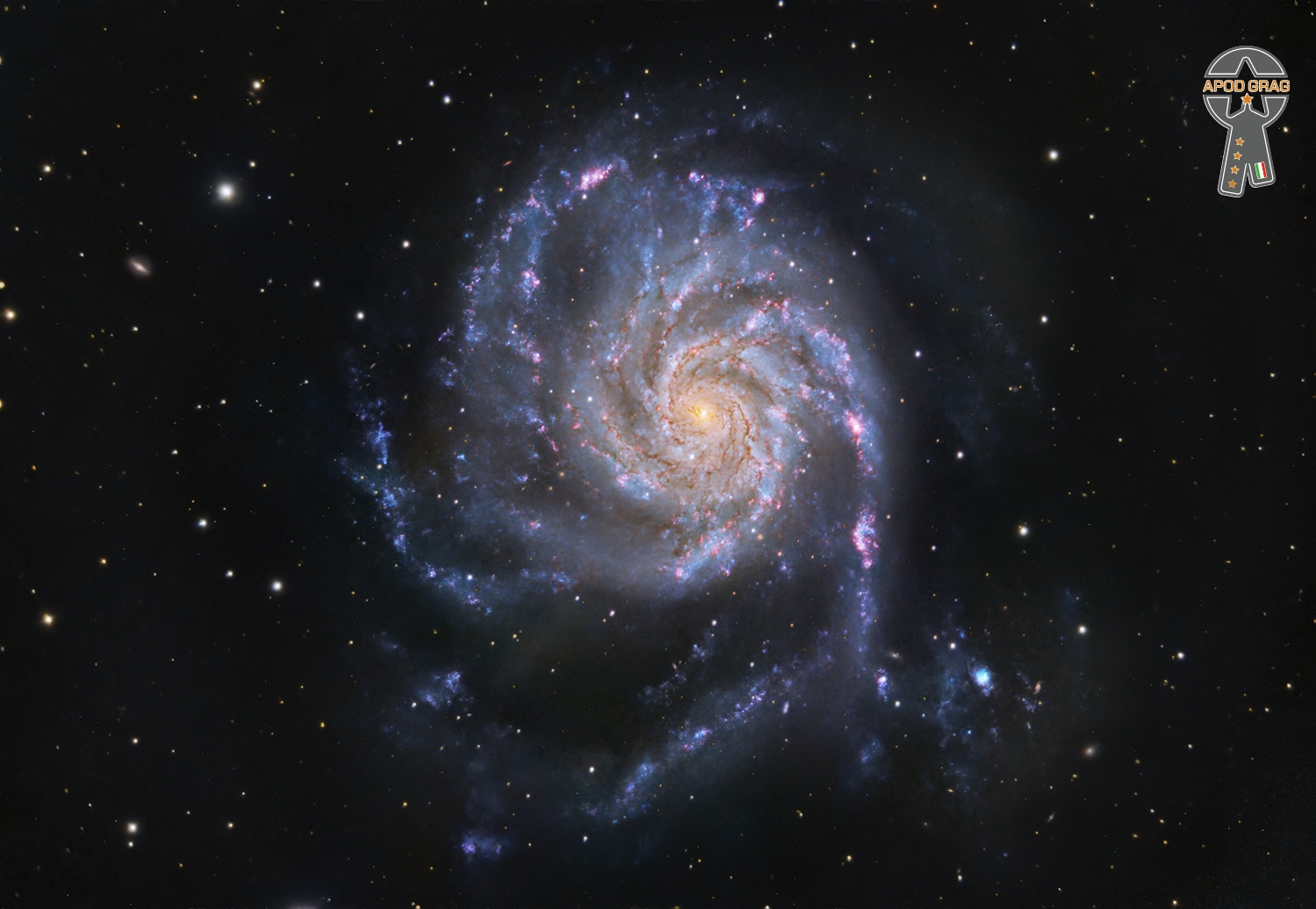Cosmos M101
This stunning view of M101, also known as the Pinwheel galaxy, is one of the largest images Hubble has ever captured of a spiral galaxy. Assembled from 51 exposures taken during various studies over nearly ten years, this infrared and visible-light image measures 16,000 by 12,000 pixels. Ground-based images were used to fill in the portions of the galaxy that Hubble did not observe.
The giant spiral disk of stars, dust and gas is 170,000 light-years across — nearly twice the diameter of our galaxy, the Milky Way. M101 is estimated to contain at least one trillion stars. The galaxy’s spiral arms are sprinkled with large regions of star-forming nebulas. These nebulas are areas of intense star formation within giant molecular hydrogen clouds. Brilliant, young clusters of hot, blue, newborn stars trace out the spiral arms.
Pierre Méchain, one of Charles Messier’s colleagues, discovered the Pinwheel galaxy in 1781. Located 25 million light-years away from Earth in the constellation Ursa Major, M101 has an apparent magnitude of 7.9. It can be spotted through a small telescope and is most easily observed during April.
